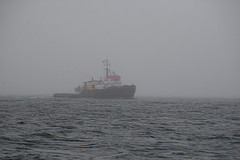Motivate...
What would our weather be like without water? Have you ever thought about what water, in all of its forms -- solid (ice), liquid, and gas (water vapor), contributes to the weather as we know it? Sure, water is responsible for obvious things like clouds and precipitation, but would we still have other types of "weather" (wind, temperature changes, etc.) without water?
Mars is a good place to consider when answering this question. The Martian atmosphere is devoid of water. Does that mean that there is no weather on Mars? Certainly not! In fact, Mars can have some pretty cool weather -- if you like whirlwinds of dust, called "dust devils" (check out this series of images from the Spirit Rover of one such dust devil). So, water in the atmosphere is not a necessity for creating "weather," but it sure makes our weather more varied and interesting (not to mention allowing life to flourish on our planet).
In this lesson, we will begin to examine the varied roles that water plays in the atmosphere. We will begin by looking at the hydrological cycle and by becoming familiar with the various processes that move water through the earth-atmosphere system. Next, you will learn the physical principles behind cloud formation and why something that you likely learned in your previous science education (the idea that "warm air holds more water than cold air") is a fallacy. We'll apply the physical principles of cloud formation to a variety of different practical scenarios, including fog formation, clouds that form from "orographic lifting," and contrails. Finally, you will learn about the ways that meteorologists keep track of water in the atmosphere and the variables that they use to describe the state of the atmosphere with respect to water (like dew point and relative humidity).
Now it's time to get your "feet wet," so to speak. Let's get started in learning about water!
